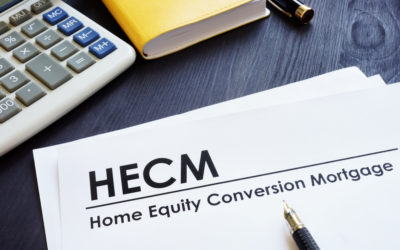When it comes to planning for the future, many seniors contemplate how their outstanding debts could later affect their family members and heirs. A reverse mortgage may seem like an attractive option, but what happens to a reverse mortgage after death? What happens to the loan balance, and who becomes responsible for the repayment of the debt?
These are all valuable questions that are certainly worth asking. Today’s post addresses these common concerns and provides information that you and your family can use to have an important conversation. Click on a link below to learn more about reverse mortgage rules after death or read through end-to-end for a full understanding of this type of loan.
What Happens to a Reverse Mortgage after Death?
Reverse mortgages carry no monthly payment. The loan does not become Due and Payable until the last surviving borrower passes away or moves off the property unless they default on the loan by failing to make necessary repairs or falling behind on their property taxes and/or insurance. Prior to that point, borrowers can defer making payments on their loan balance until it becomes Due and Payable.

Also known as a Home Equity Conversion Mortgage (HECM), a reverse mortgage becomes Due and Payable when the last surviving borrower passes away or moves off the property. If the borrower passes away before permanently vacating the home, the co-borrower, eligible spouse, or heir becomes responsible for the reverse mortgage after death.
Reverse Mortgage after Death of the Borrower: Spouse’s Responsibility
With most married couples, a reverse mortgage after death is fairly straightforward: the couple jointly owns the home and completed the reverse mortgage application process together; in the event that one spouse dies, the surviving spouse becomes the sole owner of the home with the reverse mortgage.
So long as the surviving spouse is listed as a co-borrower on the reverse mortgage, he or she may continue to occupy the home. If the spouse continues to live in the home, repayment can be deferred until after their death.
A co-borrowing spouse is protected in a reverse mortgage after death and may continue to live in the home so long as qualifying conditions are met. The Reverse Mortgage Stability Act introduced new reforms that benefit and protect the interests of non-borrowing spouses, as well.
HUD policy now states that if an FHA-backed reverse mortgage was issued on or after August 4, 2014, the non-borrowing spouse may remain in the home after the HECM borrower dies. In addition, the loan repayment will be deferred.
However, these instances are only true if certain criteria are met, including the following:
- the non-borrowing spouse is married to the borrower at the time of closing and stays married to the borrower for his or her lifetime
- their spousal status is disclosed at origination and closing of the loan
- the non-borrowing spouse is named in the HECM documents
- the non-borrowing spouse has occupied and continues to occupy the property as a principal residence
- the non-borrowing spouse is able to prove legal ownership or obtain a legal right to remain in the property within 90 days following the borrower’s death
- the non-borrowing spouse meets and continues to meet all of the obligations described in the loan documents, and ensures that the HECM does not become Due and Payable
If the non-borrowing spouse does not meet these requirements, the loan becomes Due and Payable. Learn more about non-borrowing spouse protections here.
Any resident who lives in the home but is not an eligible non-borrowing spouse or co-borrower must vacate the property in most circumstances. If a disabled child lives with parents who decide to obtain a reverse mortgage, that son or daughter may be required to find alternative housing options once the loan becomes Due and Payable, unless the reverse mortgage is paid and the title passes according to arrangements made by the estate.
It’s therefore highly encouraged to consider any adult children living at home before obtaining a reverse mortgage and to have a careful conversation with all family members involved.

Reverse Mortgage after Death of the Borrower: Heir’s Responsibility
An FHA-insured reverse mortgage is a non-recourse loan. This means that when a home is left to the homeowner’s children, the heirs will never be responsible for paying more than the home is worth. Heirs will either be required to pay the outstanding balance or 95 percent of the home’s current appraised value, whichever is less.
This is true regardless of whether or not they plan to occupy the property. When a loan servicer verifies that the last surviving borrower has passed away, they will mail a “Due and Payable” notice to the homeowner’s estate informing the loan must be repaid and providing options for doing so.
When heirs are dealing with a reverse mortgage after the homeowner’s death, there are usually three different options:
- Keep the home. The homeowner’s heirs may choose to hold onto the property by paying off the loan balance.
- Sell the home. If the heirs decide not to keep the home and pay off the reverse mortgage after death, they may sell the home to settle the debt. Sometimes, depending on the real estate market and the amount of loan proceeds used over the course of the loan, the principal balance may be higher than the appraised value of the home. In this case, the heirs would only be responsible to repay 95% of the value of the home or the outstanding balance, whichever is less; the lender will take the loss and request reimbursement from their insurance with the Federal Housing Administration (FHA). However, if the property sells for more money than the outstanding debt of a reverse mortgage upon death, the heirs keep the remaining funds.
- Deed the property back to the lender. In some cases, the heirs may choose to deed the property back to the lender, meaning the heirs release the property to the lender and the lender becomes the new owner. Although this should be reserved for scenarios where there is no excess equity left, it is a viable means to avoid foreclosure and for the heirs to walk away from the property with no further financial obligations.
Getting Started with Reverse Mortgages
If you’re looking to get started with a reverse mortgage, these articles can help guide you through all aspects of the process.
Guide to HECM Loan Reverse Mortgage Limits
Rules on Loan Balance of Reverse Mortgage after Death
Most reverse mortgages are Home Equity Conversion Mortgages (HECMs). These are backed and insured by the FHA and overseen by the U.S. Department of Housing and Urban Development (HUD). Government-backed loans provide benefits designed to protect borrowers, surviving spouses, and their heirs.
Furthermore, HECM reverse mortgages are non-recourse loans, meaning a lender cannot seek recourse against other assets for repayment. In other words, a lender may never take a car, investment property, or valuable possession from an estate in an attempt to pay off the reverse mortgage when the owner dies per HECM guidelines.
In summary, if a co-borrowing spouse or heir inherits a home with a reverse mortgage, they will never owe more than the property is worth and they will never be forced into selling their assets to cover the debt. If they sell the home for more than the balance of the reverse mortgage, they can keep the remaining equity as proceeds. They may also choose to keep the home if they can afford to do so, or may sign the property over to the lender without further financial obligation.
Reverse Mortgage after Death Timeline
When a loved one passes away, life can feel chaotic. By taking a look at the average timeline of a reverse mortgage after death, you and your family can prepare for how to settle your affairs and minimize confusion later on.
- A loan servicer sends a condolence letter typically within 30 days of the death of the last surviving borrower. The letter will indicate that the reverse mortgage has reached a maturity event and entered into a Due and Payable status.
- Heirs will receive six months’ time to choose how to proceed. During this time, interest on the loan balance continues to accrue and monthly insurance premiums must be paid, so it’s within the heir’s best interest to act quickly when dealing with a reverse mortgage after death.
- If necessary, the estate may request up to two 90-day extensions, subject to HUD’s approval. Heirs may use this time to try and sell the property or to plan how to keep the home through a new mortgage or alternative means.
- After this time, the loan may go into default and a servicer may begin the foreclosure procedures on a reverse mortgage property.
According to the National Reverse Mortgage Lenders Association (NRMLA), a servicer may initiate foreclosure on a reverse mortgage after death if:
- The initial Due and Payable notice is ignored
- The home has not sold after the 90-day extensions have expired
- The borrower has no heirs
If heirs are actively working to arrange financing or sell the home to satisfy a reverse mortgage after the owner dies, the foreclosure may be delayed. Families should have a conversation in advance to decide on how they plan to settle the loan balance down the road.
Talking about how to plan for life after death can be uncomfortable for some families, but by making sure you and your loved ones are prepared for what comes next, you can enjoy life together to its fullest—with less stress later on.
If you’re still uncertain about how a reverse mortgage works and would like clarification on this form of financing, don’t hesitate to contact a helpful member of our GoodLife team who will be happy to answer your questions or click on the link below.

 1-866-840-0279
1-866-840-0279


